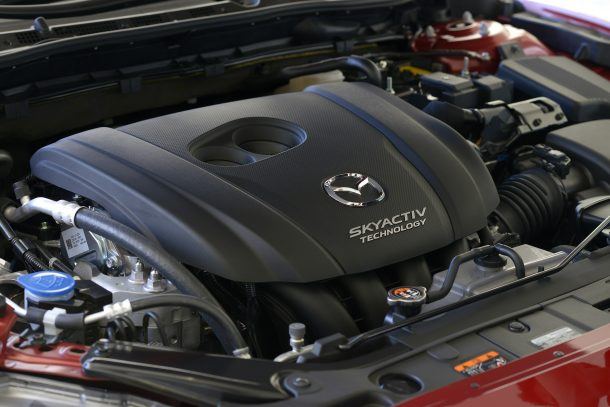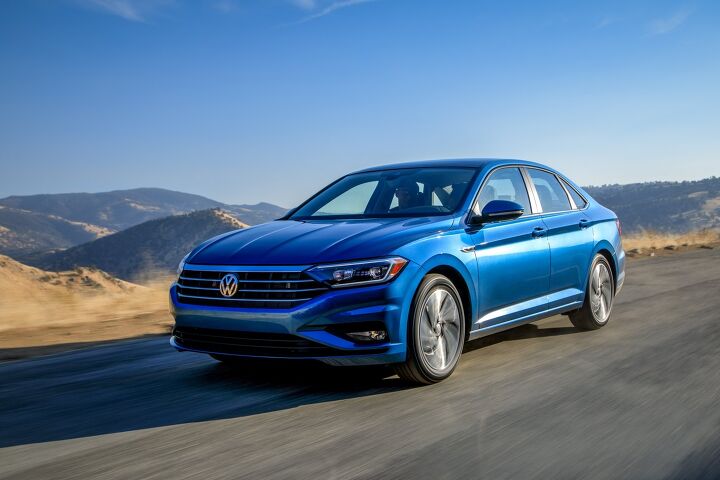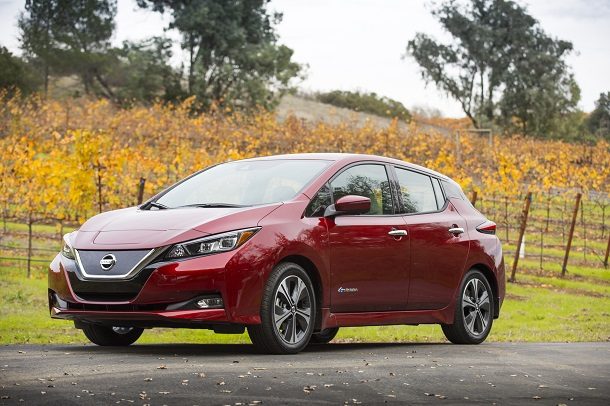#FuelEconomy
Premium is the New Regular: Automakers Want to Kill 87 Octane
The automotive industry wants to make 95 octane gasoline the new normal for the United States and it has taken its case to Washington. On Friday, Dan Nicholson, General Motors’ vice president of global propulsion systems, told the House Energy and Commerce Committee’s environment subcommittee that switching to 95 octane would align the U.S. with Europe and is one of the most affordable ways to boost fuel economy and lower greenhouse emissions.
Affordable for automakers, that is. Because there is no reason to think your local gas station will suddenly do you a solid and price 95 octane lower just because 87 is gone.
Tiny Engines Have a Home in Chevrolet Vehicles, Regardless of What the EPA Decides
As it stands, the only Chevrolet vehicles not offered with available four-cylinder power are the Suburban, Tahoe, and Silverado lines of full-size trucks. Everywhere else, from the diminutive Spark hatch to the Camaro sports coupe and the full-size Impala sedan, and from the Equinox and Traverse crossovers to the Colorado pickup, you’ll find at least the option of a gasoline four-banger displacing no more than 2.5 liters.
Even if you choose a V6 or V8, there’s a good chance it’ll also run on four cylinders under light loads.
Now that the legislation that expedited the engine downsizing trend is poised to disappear, the brand says it’s not changing course. Chevrolet will pretend there’s still an Obama in the Oval Office and that its hide depends on making steady fuel economy gains.
Piston Slap: Misfiring on Mazda 3 Skyactiv's Diagnosis?
Brian writes:
Hi Sajeev,
You are my go-to guy for in-depth automotive knowledge. (Wow! Honored. – SM)
My brother has been having a heck of a time with his 2012 Mazda3 Skyactiv. It’s got about 70k miles on it, and in the past 2 years it’s been in and out of the shop. It started with high engine oil consumption (more than a quart per 3k miles, and going up to this day). Then the ignition coils needed to be replaced. Then the MAF and oxygen sensors needed to be replaced. Right after those were fixed, he had to take it back to the shop because there is now a misfire in one of the cylinders.
What’s going on here? My only guesses are worn piston rings causing engine oil to run into the combustion chamber (then down the exhaust and ruining the O2 sensor), or malfunctioning PCV, a broken EGR system, intake valves with a lot of carbon deposits, or simply “bad luck” with this car.
Hope you are able to shed some light on this mystery. Thanks!
America's Gas War Begins
Now that the Environmental Protection Agency has officially confirmed its intent to roll back Corporate Average Fuel Economy (CAFE) standards, the opposition has kicked things into high gear, mobilizing for the coming battle.
In one corner you have the White House and EPA Administrator Scott Pruitt seeking lowered emission mandates. They claim the Obama administration created unfeasible fueling regulations, noting that the public regularly opts for less-efficient trucks and SUVs and largely ignores the purchase of electric vehicles. In the other corner you have a handful of Senate Democrats, environmental groups, and a bunch of blue states led by California lawmakers. They all say the preexisting rules are not only feasible, but essential for the good of the nation.
If you’re wondering which side of the highly partisan issue is correct, we’d argue it has almost everything to do with your point of view. Both sides can make a fairly strong case, and will do just that as the battle heats up. Fortunately, this may not end up being a legitimate civil war — if the California Air Resources Board (CARB) is to be believed.
Triumph or Tragedy? EPA Officially Sides With Automakers on Fuel Economy Rollback
It looks as if the United States will find out if softened fuel economy targets will transform the domestic market into a haven for automobiles with exquisite powertrains or an antiquated dinosaur with garbage cars making use of old, pollution-friendly tech.
As predicted, the Environmental Protection Agency officially announced its intent to roll back Corporate Average Fuel Economy (CAFE) standards this week. On Monday, EPA head Scott Pruitt indicated his agency would begin the formal regulatory process with the Department of Transportation’s National Highway Traffic Safety Administration (NHTSA) to lower the existing MPG rules.
For the most part, Pruitt avoided diving deep into the NHTSA’s past claims of larger vehicles being safer and the manufacturing pitfalls associated with rushing cutting-edge technology to market — two issues we expected to be addressed. Instead, he left the announcement rather basic by stating the Obama-era rules were “not appropriate and should be revised.” The cornerstone of the EPA’s argument is that Americans simply aren’t buying more efficient automobiles, despite their current availability, and automakers have grown concerned with meeting CAFE standards after 2022.
“The Obama administration’s determination was wrong,” Pruitt said in a statement. “Obama’s EPA cut the midterm evaluation process short with politically charged expediency, made assumptions about the standards that didn’t comport with reality, and set the standards too high.”
EPA Readies Rollback of Fuel Efficiency Regulations
Rumors are flooding in that U.S. Environmental Protection Agency Administrator Scott Pruitt will sign a declaration upending the Obama-era fuel economy regulations any day now. New details have emerged claiming Pruitt plans to visit a Chevrolet dealership in Virginia to publicly condemn the existing 2025 targets as unrealistic. Reportedly scheduled for next Tuesday, the EPA head will be accompanied by groups representing both automakers and car dealers.
California is going to be furious.
It's Gonna Be a Showdown: EPA Head Says California Won't Drive U.S. Fuel Regulations
The Trump administration’s chief environmental regulator claims the Environmental Protection Agency will not pursue stricter fuel economy mandates after 2025. EPA Administrator Scott Pruitt also said California won’t call the shots for the rest of the country just because it can set its own rules on emissions.
“California is not the arbiter of these issues,” he said. Currently, California and 16 other states have pledged to maintain Obama-era emission when federal regulators decide to roll them back “but that shouldn’t and can’t dictate to the rest of the country what these levels are going to be,” according to Pruitt.
Stick that in your tailpipe, one-third of America.
Moving From Mitsubishi's Outlander Sport to the Smaller-engined Eclipse Cross Won't Pay Off At the Pumps
One’s an ancient model that continues to sell in significant numbers; the other’s a fairly radically styled new model in the same compact crossover segment. Together, the Outlander Sport (RVR in Canada) and Eclipse Cross make up two-thirds of Mitsubishi’s utility vehicle lineup.
It seems these two rivalrous siblings — separated by $2,900 and a host of powertrain differences — will share the same segment for some time to come, as there currently isn’t a next-generation Outlander Sport in the pipe. We might wait nearly three years before one appears. In the meantime, anyone willing to shell out less dough for a two-row Outlander Sport can expect to save cash on gasoline, as well.
It may have the smaller engine of the two, the Eclipse Cross has the greatest thirst.
Nice Prius - Now Pay Up: Maine to Green Car Owners
Here at TTAC, we sometimes tap sister publications when a story arouses our interest. This piece, published by Hybrid Cars, details a battle brewing in the rustic state of Maine — one that pits hybrid and electric car owners against a government that says their cars, while good for the environment, aren’t good for road upkeep. As cars become greener and gas tax revenues dwindle, this won’t be the last battle.
A proposed new fee for hybrids and EVs in Maine could be the highest in the country, reducing clean vehicle adoption.
The Maine Department of Transportation wants to add an annual registration fee for hybrids and electric vehicles. $150 for hybrids, and $250 for electric models. The DOT is looking to impose the fee because it says drivers of the more energy efficient vehicles aren’t paying their fair share toward road maintenance.
“The owners of these types of vehicles are paying far less in the gas tax than other vehicle owners and they are using the highway system just like any others,” MDOT Manager of Legislated Services Megan Russo told the Portland Press-Herald. “There has got to be a way to try and capture revenue from those drivers who are using our road system.”
Infiniti Wasn't Fibbing When It Estimated the Revolutionary QX50 Engine's Thirst
One thing is clear — with variable compression comes a newfound lack of thirst.
Infiniti’s previous midsize QX50 crossover didn’t astound in its thrift, garnering 20 miles per gallon on the EPA combined cycle. The move to a new, front-drive platform and addition of a years-in-the-making gasoline engine for 2019 has done wonders for the model’s drinking habit, however, and Infiniti engineers pegged the MPG figures right on the nose.
With the 2019 QX50‘s fuel economy now confirmed by the EPA, it begs the question: just how much of the model’s thriftiness can the variable compression engine take credit for?
Already a Gas Sipper, the 2019 Volkswagen Jetta's Fuel Economy Nears the Head of the Class
The next-generation Jetta, now virtually indistinguishable from other cars when viewed from the side (but unmistakably Volkswagen in its front and rear styling), has plenty of newness on offer, having switched to the company’s MQB platform for the 2019 model year.
Along with a stretch in wheelbase, the new Jetta gains expanded passenger volume and updated features, though not an updated engine. The well-regarded 1.4-liter TSI turbocharged four-cylinder carries over to the seventh-generation model, making 147 horsepower and 184 lb-ft of torque, but a brace of new transmissions arrive to bump the compact sedan’s fuel economy to new (gas-powered) heights.
EPA Says the 2018 Nissan Leaf Goes the Extra Mile - Literally
What a difference a mile makes. Or does it? In the case of the 2018 Nissan Leaf, the second-generation model’s newly enlarged driving range might not sway a single buyer or suddenly place the model ahead of a close challenger, but any improvement in an EV’s travel radius is worthy of a celebration at the company’s HQ.
If you haven’t heard the news, the 2018 Leaf’s range now stands at 151 miles, according to the Environmental Protection Agency’s just-released official rating. What was it before? Well, Nissan estimated 150 miles. Hardly shocking, but it’s nonetheless good news as the automaker waits for next year’s arrival of a longer-ranged, more competitive model.
6 Appeal: Mazda's Newly Turbocharged Midsize Reveals Its MPGs As Automaker Hopes Upscale Push Pays Off
This is the sixth model year for the third-generation Mazda 6 which, despite its age, remains arguably the best-looking midsize sedan on the market. Mazda belatedly answered long-standing cries for more power by offering a turbocharged 2.5-liter inline-four for 2018, giving the model the grunt it needs to back up its sporting pretentions.
We now know what drivers can expect at the pumps from this engine, borrowed from the CX-9 parts bin. However, can the emergence of a true Mazda 6 sports sedan rekindle waning interest in the model?
New Vehicles Are More Powerful and Efficient Than Ever, but the Greenest Automaker Only Sells Gas Models: Study
Every year, the Environmental Protection Agency tabulates all available data for new vehicles sold in the United States and prints colorful graphs showing the country’s progress — or in some cases, regression — in key areas of autodom. Areas like average fuel economy, vehicle weight, horsepower, and emissions.
It’s a tradition dating back to the heady, wide-lapelled days of 1975.
The most recent report on light-duty vehicles in the U.S. shows definite, albeit incremental, progress towards many environmental goals. While the auto landscape may not be advancing at the rate preferred by many environmentalists, urbanists, and the Tesla fan base, there’s cause for celebration within the report’s pages. There’s also a special prize in there reserved just for Mazda.
Fuel Economy Figures Released for Hyundai's Littlest Crossover
Hyundai’s smallest utility vehicle arrives as the automaker tries to put a troubling year behind it. Sales fell significantly in both the U.S. and Canada in 2017, the first annual drop since the recession. The blame for the 13.4 percent U.S. drop and 6.1 percent Canadian decline lies in our growing aversion to small, fuel-efficient cars, of which Hyundai has many, and our insatiable lust for large utility vehicles, of which Hyundai does not have enough.
There’s nothing large about the Hyundai Kona, but it’s still an important player in the raft of new or revamped crossovers bound for Hyundai’s stable. And, just like in the small car segment it’s slowly replacing, economy matters in the small crossover segment. So, now that the Environmental Protection Agency has seen fit to test the Kona, how does its thirst stack up against its rivals?






























Recent Comments